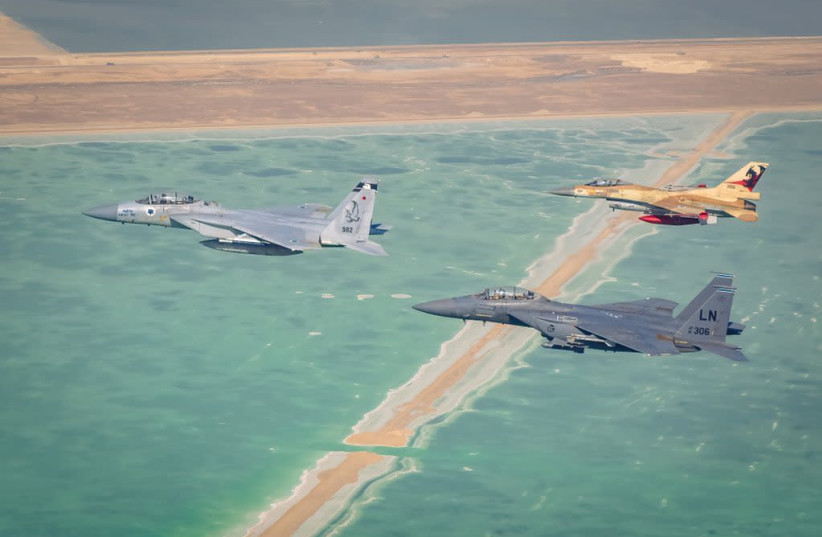The commander of the US Naval Forces Central Command’s (NAVCENT), V.-Adm. Brad Cooper, was in Israel for a working visit, meeting with senior Israeli military officers.
During the visit, Cooper met with IDF Chief of Staff Lt.-Gen. Aviv Kohavi, Israel Navy chief David Saar Salama, and IDF Strategy and Third Circle Division head Maj.-Gen. Tal Kalman.
During the meeting, the officers discussed promoting international cooperation and strengthening ties in order to protect and monitor international waters that are vital to international trade.
They also discussed regional stability in the Middle East, and Cooper was briefed on the challenges posed to Israel in its southern waters and its offshore assets in its Exclusive Economic Zone.
It was Cooper’s third visit to Israel in the last six months, “reflecting the close cooperation between the US and Israeli navies,” the IDF Spokesperson’s Unit said in a statement, adding, “The visit demonstrates the importance of the strategic and operational ties between the fleets.”


Kohavi said, “Maritime cooperation between the IDF and the US military is another example of the strength of the strategic relationship between the two. Joint work will continue to yield many achievements for Israel and our security. Together we will continue to face the challenges ahead in order to maintain stability in the Middle East.”
The meeting comes after Kohavi spoke with Chairman of the Joint Chiefs of Staff Gen. Mark A. Milley on Thursday, when the two discussed “the current security situation and items of mutual interest,” read a statement put out by his office.
Israel formally moved from US European Command to CENTCOM in September. Since then, military officials have been meeting regularly.
In December, Kalman and Operations Division head Maj.-Gen. Oded Basiok, along with Defense Attaché to Washington Maj.-Gen. Hidai Zilberman and International Cooperation Division head Brig.-Gen. Effie Defrin went to CENTCOM’s headquarters at MacDill Air Force Base in Tampa, Florida.
They met with Director of Operations of Central Command Maj.-Gen. Grynkewich, Director for Strategy of Central Command Maj.-Gen. Benedict, and Deputy Cmdr. of US CENTCOM V.-Adm. James Malloy.
During the meeting, the commanders discussed regional operational cooperation, discussed common challenges facing the two militaries, and deepened their operational readiness and strategic dialogue, the IDF said.
Israeli troops have held several drills with CENTCOM, the United States Air Force Central Command and NAVCENT in recent months in the south of the county, including one in November with Bahrain and the United Arab Emirates in the Red Sea.
“The Iranians are independent at sea and must be kept away from the Red Sea so as not to infringe on Israel’s freedom of navigation or to carry out maritime terrorism,” a senior Israel Navy officer said at the time.
Iran, he said, is attempting to entrench itself not only on land in the region but also at sea, where it has used drones and other platforms to carry out attacks.
With tensions high and clashes occurring between the Fifth Fleet and Iranian vessels in the Persian Gulf, Tehran is also working to increase its maritime capabilities and modernize the navy by upgrading its existing fleet of surface vessels and new submarines.
Though it mainly operates in the Arabian Sea and the Gulf of Oman, the Iranian Navy has been recently trying to expand to the Red Sea.
The US 5th Fleet’s area of operations encompasses some 2.5 million square miles and includes the Arabian Gulf, Gulf of Oman, Red Sea, parts of the Indian Ocean and three critical choke points at the Strait of Hormuz, the Suez Canal and the Bab al-Mandab Strait.
